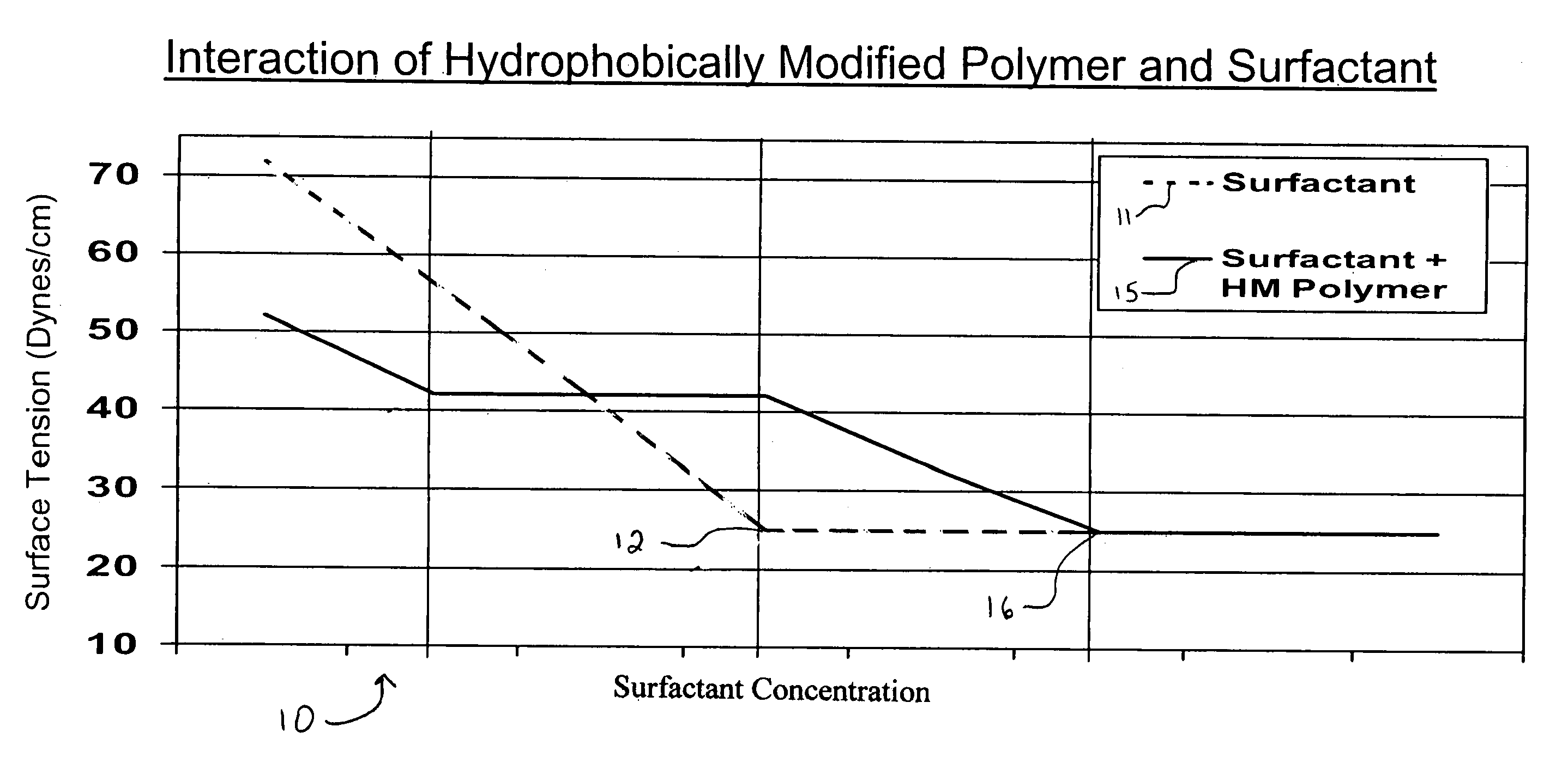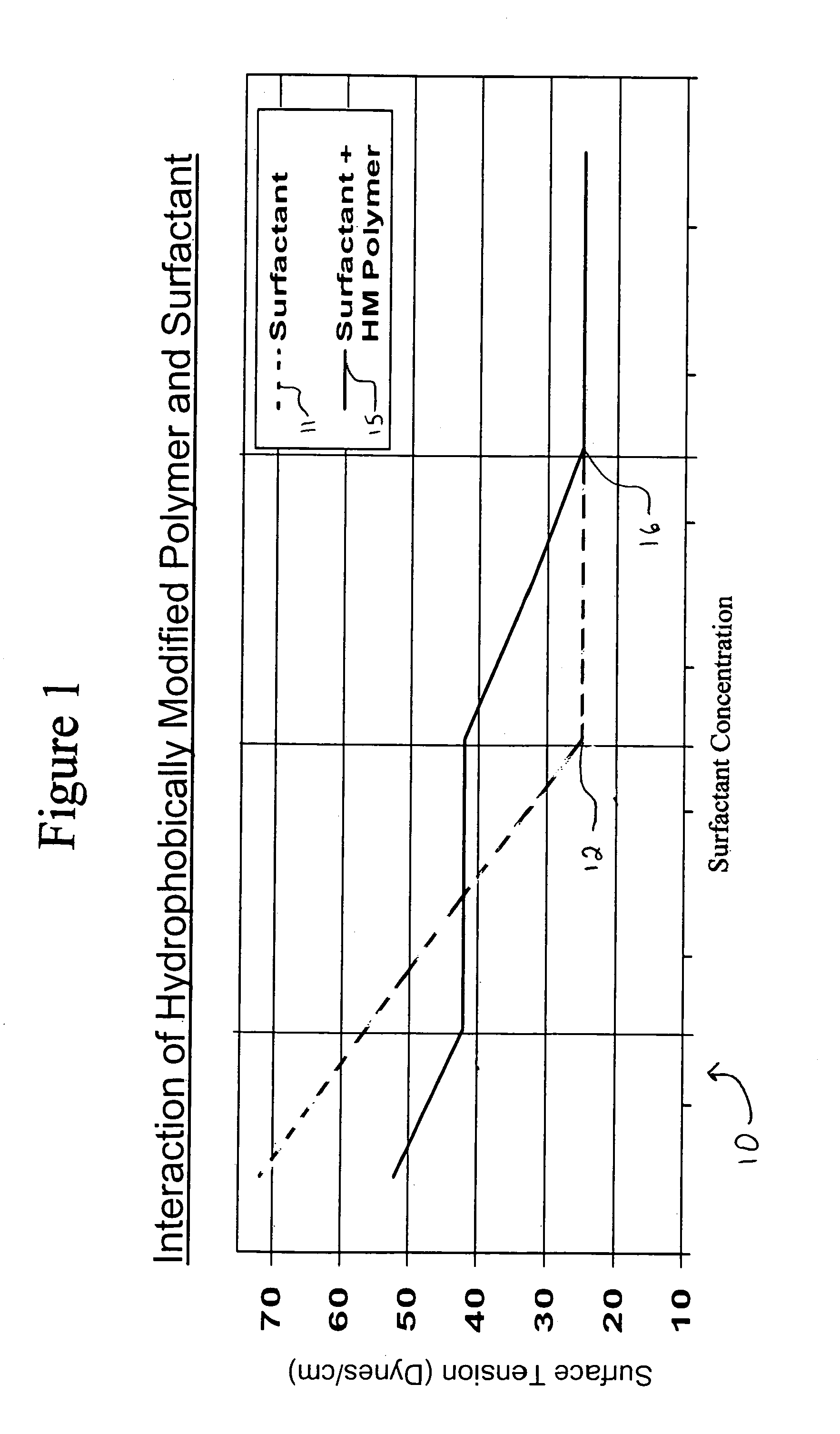Methods of reducing irritation in personal care compositions
a composition and irritant technology, applied in the field of reducing irritation characteristics, can solve the problems of poor foaming and cleansing performance of mild cleansing compositions produced via both methods, poor osmotic performance of peo, and insufficient binding of peo, so as to reduce irritation, reduce irritation, and reduce the effect of skin irritation and/or eye irritation
- Summary
- Abstract
- Description
- Claims
- Application Information
AI Technical Summary
Benefits of technology
Problems solved by technology
Method used
Image
Examples
examples
[0139]The following Trans-Epithelial Permeability (“TEP”) and Tensiometry tests are used in the instant methods and in the following Examples. In particular, as described above, the TEP test is used to determine when a composition is a reduced irritation composition according to the present invention, and the Tensiometry test may be used to determine the suitability of a particular hydrophobically-modified material for binding surfactant thereto.
Trans-Epithelial Permeability Test (“TEP Test”):
[0140]Irritation to the eyes and / or skin expected for a given formulation is measured in accordance with the Invittox Protocol Number 86, the “Trans-epithelial Permeability (TEP) Assay” as set forth in Invittox Protocol Number 86 (May 1994), incorporated herein by reference. In general, the ocular and / or skin irritation potential of a product can be evaluated by determining its effect on the permeability of a cell layer, as assessed by the leakage of fluorescein through the layer. Monolayers of...
examples 1 – 4
Examples 1–4
Preparation of Cleansing Compositions
[0148]The cleansing compositions of Examples 1 through 4 were prepared according to the materials and amounts listed in Table 1.
[0149]
TABLE 1*TradenameINCI Name1234PEG 8000 (100%)PEG 80001.800———Polyox WSR 205 (100%)PEG-14M—1.800——Carbopol ETD 2020 (100%)Carbomer——1.800—Carbopol AQUA SF1 (30%)Acrylates Copolymer———6.000Tegobetaine L7V (30%)Cocamidopropyl Betaine9.3309.3309.3309.330Monateric 949J (30%)Disodium2.0002.0002.0002.000LauroamphodiacetateCedepal TD403LD (30%)Sodium Trideceth Sulfate10.00010.00010.00010.000Glycerin 917 (99%)Glycerin1.9001.9001.9001.900Polymer JR-400Polyquaternium-100.1400.1400.1400.140Dowicil 200Quaternium-150.0500.0500.0500.050Versene 100XLTetrasodium EDTA0.2630.2630.2630.263Sodium Hydroxide solution (20%)Sodium Hydroxide—0.5000.5000.500Citric Acid solution (20%)Citric Acid0.500———WaterWaterqsQsqsqs*expressed in % w / w
[0150]The compositions of Table 1 were prepared as follows:[0151]Water (50.0 parts) was added...
examples 5 – 8
Examples 5–8
Preparation of Tensiometry Titration Compositions
[0156]The compositions of Examples 5 through 9 were prepared according to the materials and amounts listed in Table 3:
[0157]
TABLE 3*TradenameINCI Name56789PEG 8000 (100%)PEG 8000—0.050———Polyox WSR 205PEG-14M——0.050——(100%)Carbopol ETD 2020Carbomer———0.050—(100%)Carbopol AQUAAcrylates————0.167SF1 (30%)CopolymerSodium HydroxideSodium ———AsAssolution (20%)HydroxideneededneededDI WaterDI WaterQsQsQsQsQs*expressed in % w / w
[0158]The compositions of Table 3 were prepared as follows:[0159]HPLC grade water (50.0 parts) was added to a beaker. The polymer, (PEG 8000 in Example #1, Polyox WSR 205 in Example #2, Carbopol ETD 2020 in Example #3 and Carbopol Aqua SF1 in Example #4) was added to the water with mixing. The pH of the resulting solution was then adjusted with a 20% Sodium Hydroxide solution (as needed) until a final pH of about 7.0 was obtained. The remainder of the water was then added thereto.
[0160]Critical Micelle Concen...
PUM
| Property | Measurement | Unit |
|---|---|---|
| Brookfield viscosity | aaaaa | aaaaa |
| atmospheric pressure boiling point | aaaaa | aaaaa |
| concentration | aaaaa | aaaaa |
Abstract
Description
Claims
Application Information
 Login to View More
Login to View More - R&D
- Intellectual Property
- Life Sciences
- Materials
- Tech Scout
- Unparalleled Data Quality
- Higher Quality Content
- 60% Fewer Hallucinations
Browse by: Latest US Patents, China's latest patents, Technical Efficacy Thesaurus, Application Domain, Technology Topic, Popular Technical Reports.
© 2025 PatSnap. All rights reserved.Legal|Privacy policy|Modern Slavery Act Transparency Statement|Sitemap|About US| Contact US: help@patsnap.com



